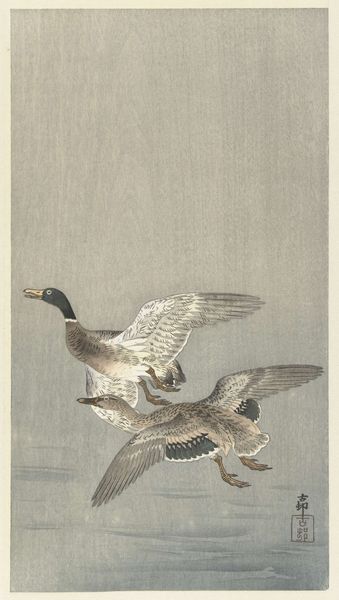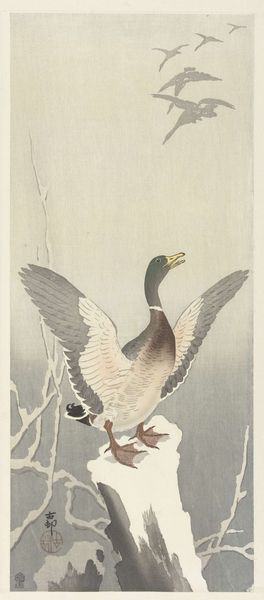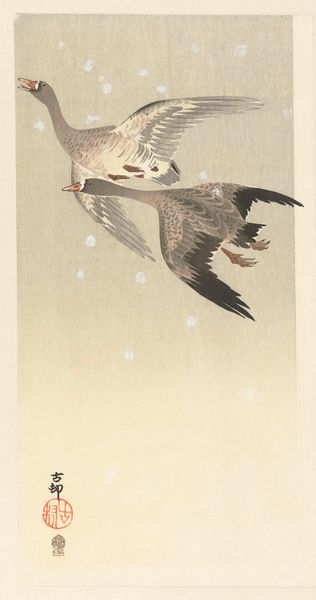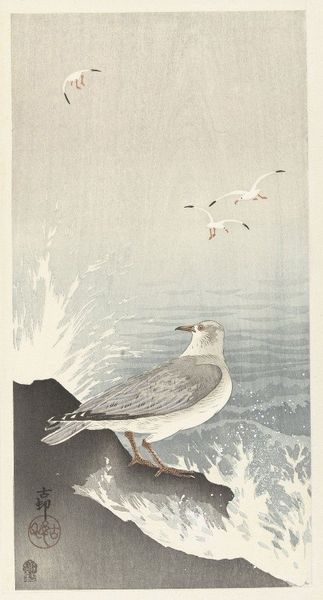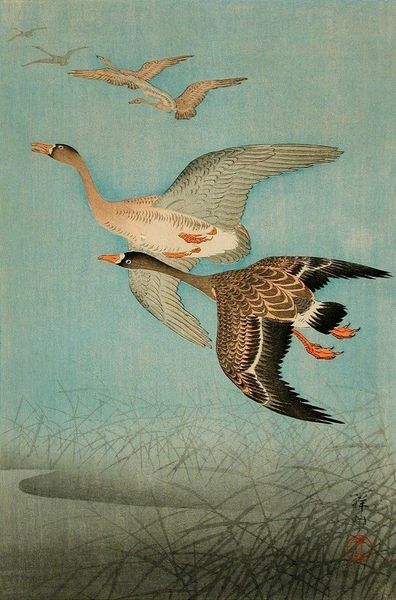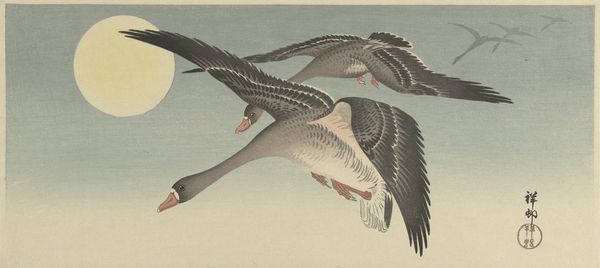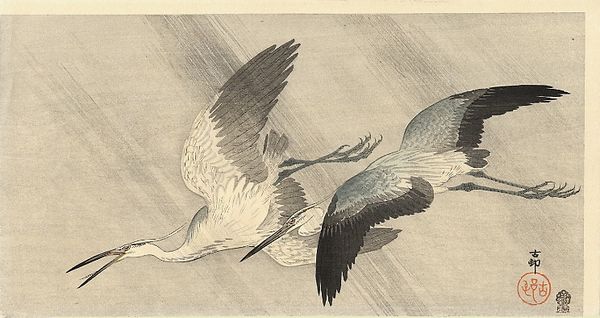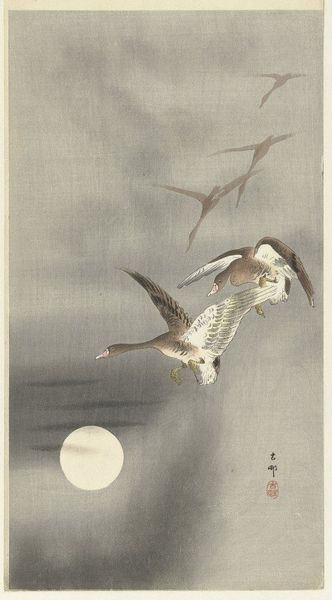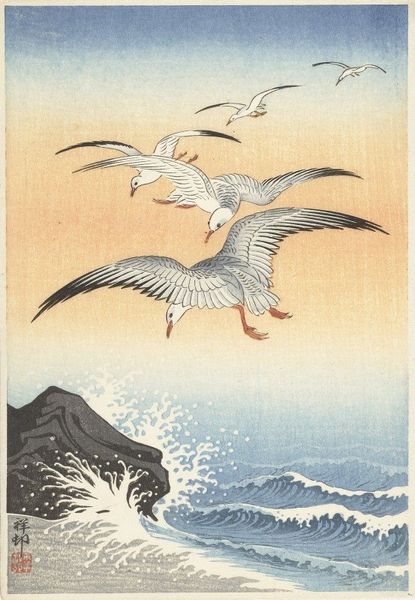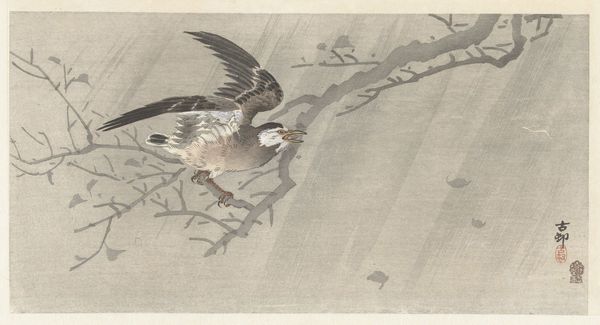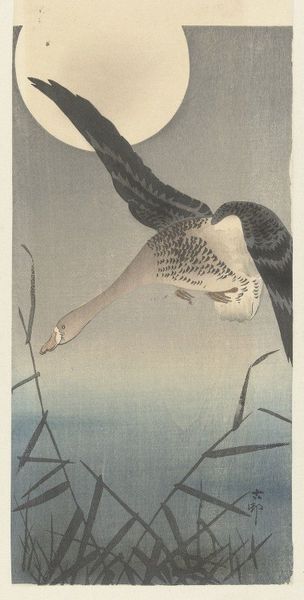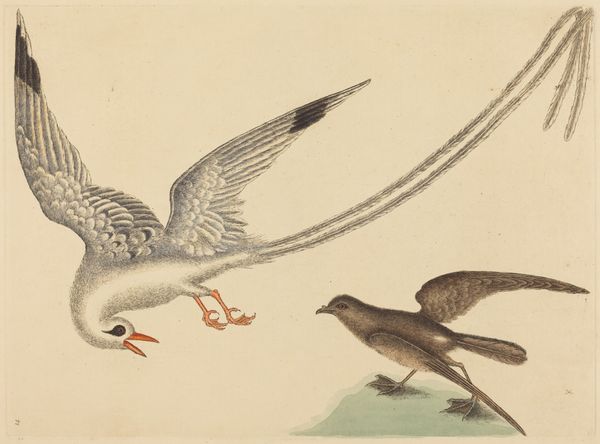
Dimensions: height 365 mm, width 240 mm
Copyright: Rijks Museum: Open Domain
Editor: This beautiful watercolor woodblock print, “Kolganzen in de vlucht,” or “White-fronted Geese in Flight,” was created by Ohara Koson sometime between 1925 and 1936. It has such a serene, almost melancholic feeling to it. What symbols do you think Koson is exploring here? Curator: The migration of geese, across cultures, often embodies the transient nature of life. In many Eastern traditions, birds carry profound symbolic weight. Notice the V-formation. Is that a symbol? Editor: You mean, the way they fly in a V shape? It seems very natural, part of the observation… not necessarily symbolic, is it? Curator: Perhaps, but consider. The ‘V’ as an iconographic element. In heraldry and symbolism, the ‘V’ can stand for victory, voyage, or vulnerability, depending on the context. Koson, working within *Ukiyo-e*, would have been incredibly sensitive to such readings, layered one atop another. How might *that* change your interpretation? Editor: I never thought about that! Seeing it as a layered set of readings really makes me appreciate how artists choose to represent something familiar to give a deeper, more personal meaning. I am starting to see all of these themes about nature with new eyes now. Curator: Exactly. And *Japonisme* brings an additional cultural filter into the picture. European artists admired, but also adapted, Japanese art in unique ways. Koson reflects the natural world, but subtly invites us to contemplate mortality, journeys, and resilience… and we're now adding new possibilities! Editor: I see it. Thank you for broadening my perspective on those hidden narratives within the artwork.
Comments
No comments
Be the first to comment and join the conversation on the ultimate creative platform.
